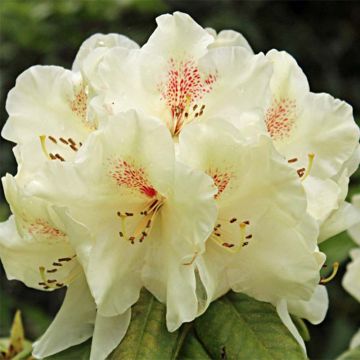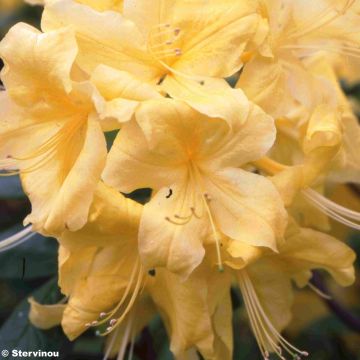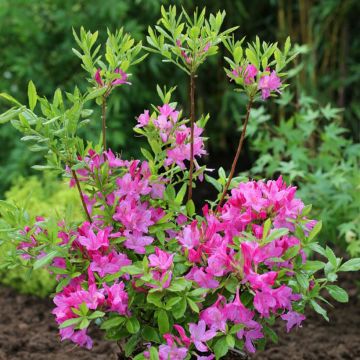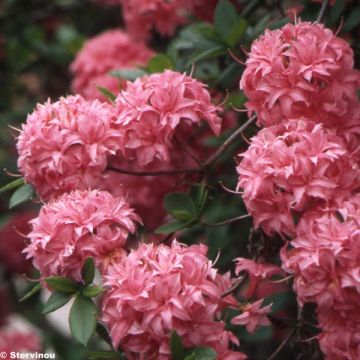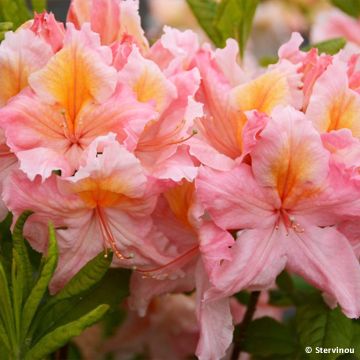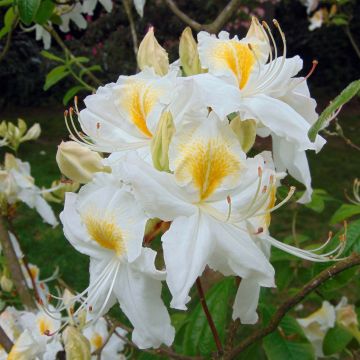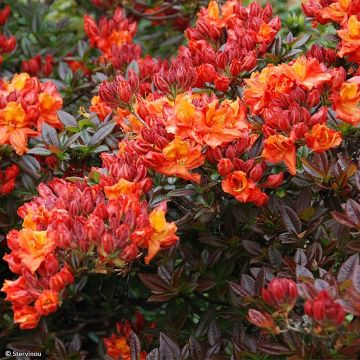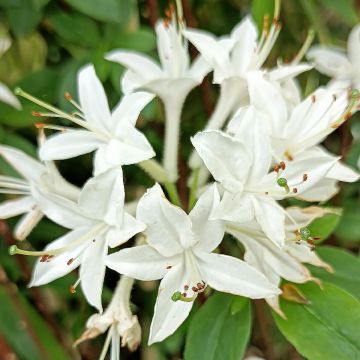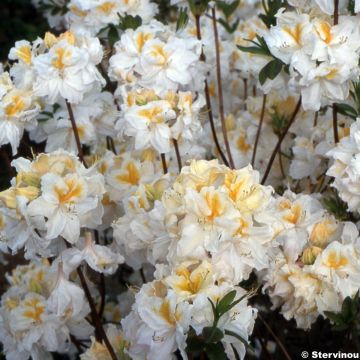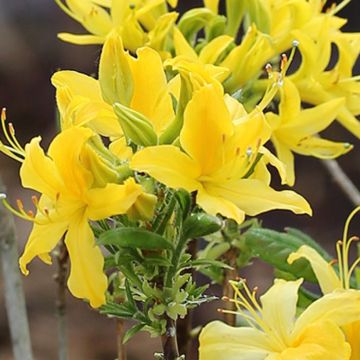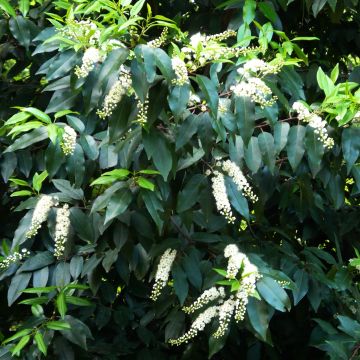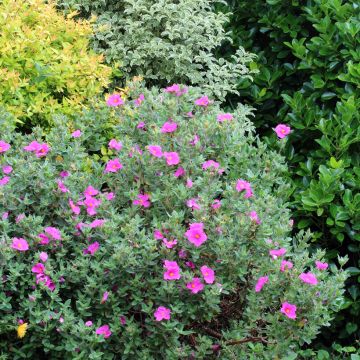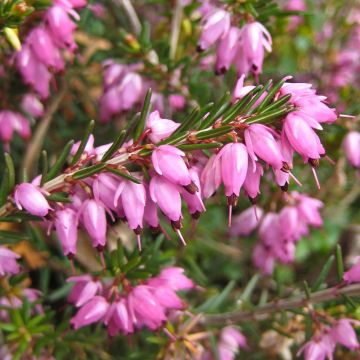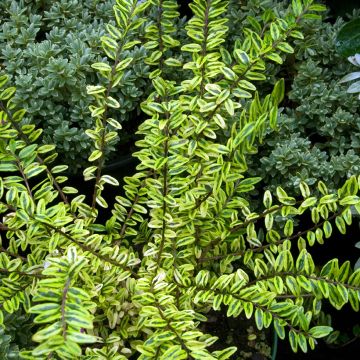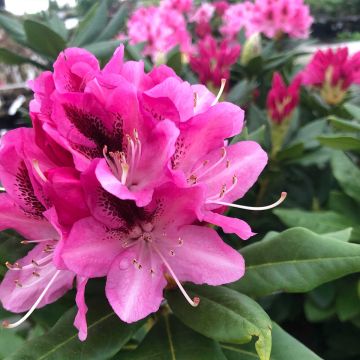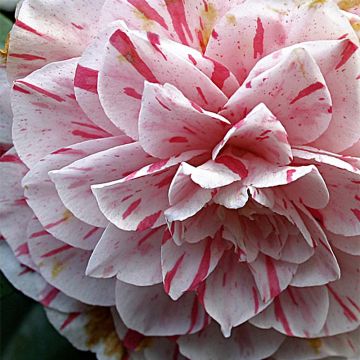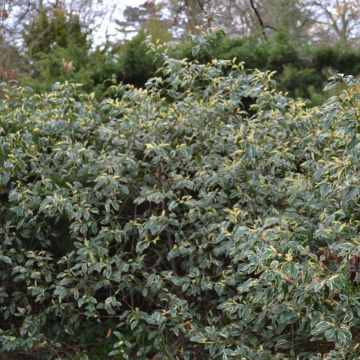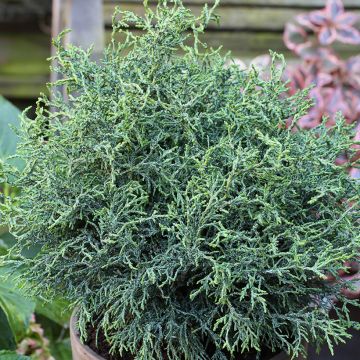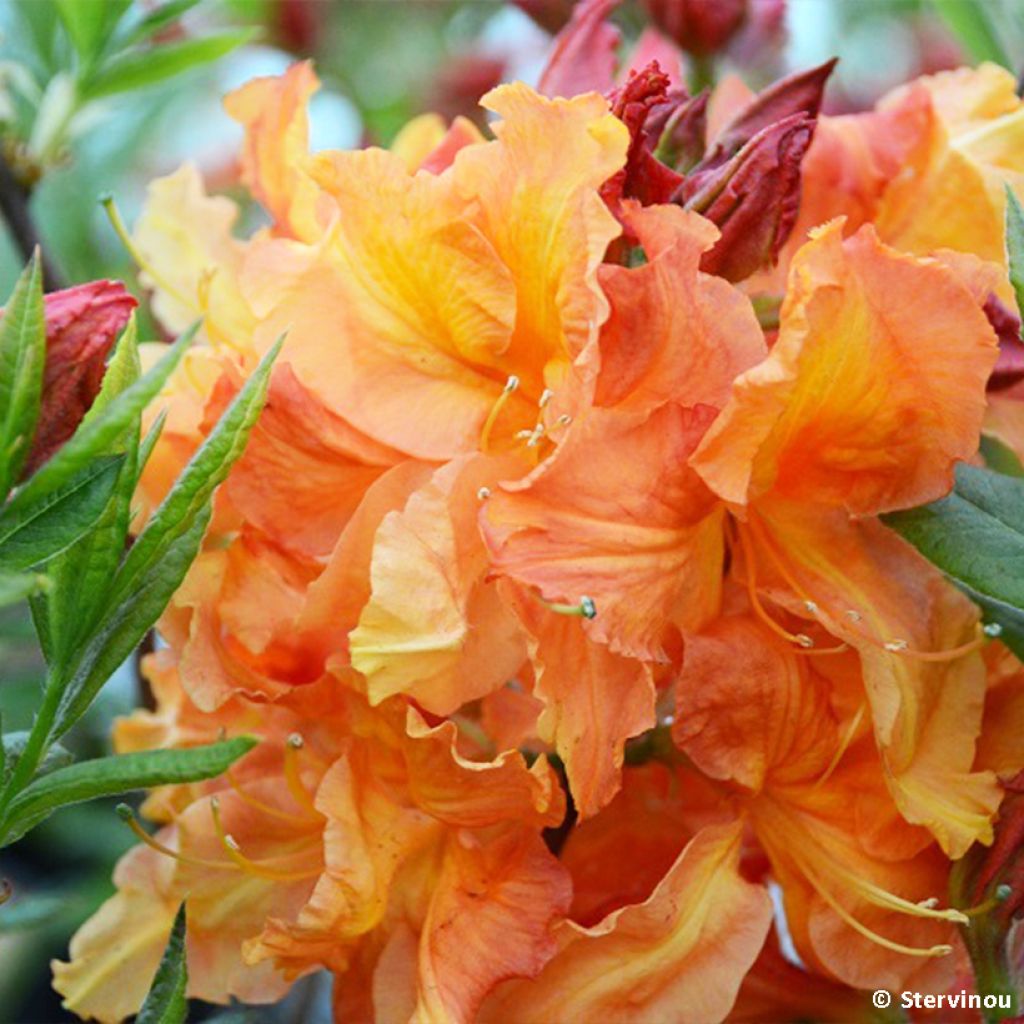

Azalée de Chine Demoiselles de Boutiguery Idylla - Rhododendron hybride
Azalea mollis Demoiselles de Boutiguery Idylla
Rhododendron (Azalea) x mollis Demoiselles de Boutiguery ® Idylla
Chinese Azalea, Soft Rhododendron
Very impressive growth (despite mishap in storage at the pickup point); numerous buds.
jm, 05/09/2024
This item cannot be shipped to the selected country
Delivery charge from €5.90
More information
Schedule delivery date,
and select date in basket
This plant carries a 24 months recovery warranty
More information
We guarantee the quality of our plants for a full growing cycle, and will replace at our expense any plant that fails to recover under normal climatic and planting conditions.
From €5.90 for pickup delivery and €6.90 for home delivery
Express home delivery from €8.90.

Does this plant fit my garden?
Set up your Plantfit profile →
Description
Chinese Azalea Demoiselles de Boutiguery Idylla is a variety that will delight fans of spectacular blooms. When spring arrives, this small bush is covered in clusters of orange flowers with yellow nuances, making it a real eye-catcher in the garden. Not very big, it is also easy to grow in containers. Unlike Japanese Azaleas, this Azalea is deciduous and perfectly hardy. Even young plants bloom prolifically, so you enjoy its beauty without waiting for years. A superb plant, to be grown in full sun or partial shade, in moist, lime-free soil.
Azalea is a horticultural term still commonly used, but in botanical terms, they are actually Rhododendrons, whose flowers have 5 stamens instead of 10. Plants from the Ericaceae family, just like heathers, strawberry trees or blueberries, they mostly prefer lime-free, acid soil and damp climates. The deciduous Chinese Azaleas, have fewer requirements than the evergreen Japanese Azaleas: they are very hardy, tolerate the sun and heat better, and even occasionally dry soil, depending on the hybrids. Nevertheless, they will be at their best in cool climates, with distinct winters, planted in humus-rich, fertile, lime-free soil.
The 'Demoiselles de Boutiguery' series is the work of a Breton family, settled on the Domaine de Boutiguery, whose park was designed by the Bühler brothers, renowned landscape designers (they are responsible for the layout of the Tête d'Or park in Lyon, the Thabor park in Rennes and the Courson Castle park in Essonne). Christian de la Sablière and his daughter Virginie work there constantly hybridising Rhododendrons in search of new flower colours.
The 'Idylla' Azalea is one of their recent creations, remarkable for the intensity of its flowers. In spring, the shrub is covered in deep red flower buds, which open into magnificent orange flowers in May. The corolla, consisting of 5 petals with wavy edges that partially overlap, are about 6 cm (2.4 in) in diameter. The flowers are a cheerful mixture of varying shades of bright orange, with orange-yellow in the central part of the petals, giving the corollas a dynamic, flamboyant appearance. Protruding orangey-yellow stamens curve upwards from the centre, adding to the beauty of the flowers. Extremely floriferous, like all the Demoiselles de Boutiguery range, this variety flowers from an early age.
Its compact habit further enhances the visual effect of the flowers. This Azalea is less than a metre in height and width.
Its deciduous foliage is made up of simple, oval-lanceolate, smooth-edged leaves arranged alternately on the branches. They vary in length from 5 to 10 cm (2 to 3.9 in). Their beautiful, bright green colour is a perfect backdrop for the flowers, which stand out clearly against the foliage. Azaleas and Rhododendrons have a shallow root system that always needs to be kept moist, but they also dislike waterlogged soil which would suffocate the roots.
This Chinese Azalea 'Idylla' will be a real eye-catcher in the garden in spring. In small gardens, it can be planted on its own, but it is more interesting in a border, in combination with other plants to frame its flowers. Corylopsis spicata, a shrub with bright yellow, pleasantly-scented flowers from March-April, will set the scene, and will also have some beautiful autumn colours. In the summer, there's nothing like the Hydrangea arborescens Annabelle, whose ball-shaped flowerheads have a green tinge when they first appear and become immaculately white throughout the summer and into September. Finally, the autumn Camellias (Camellia sasanqua) will bring the season to a close and provide winter blooms by playing with the different varieties, each more beautiful than the last. Single or double flowers, white, pink, red, bicoloured... the range is enormous!
Report an error about the product description
Azalea mollis Demoiselles de Boutiguery Idylla in pictures
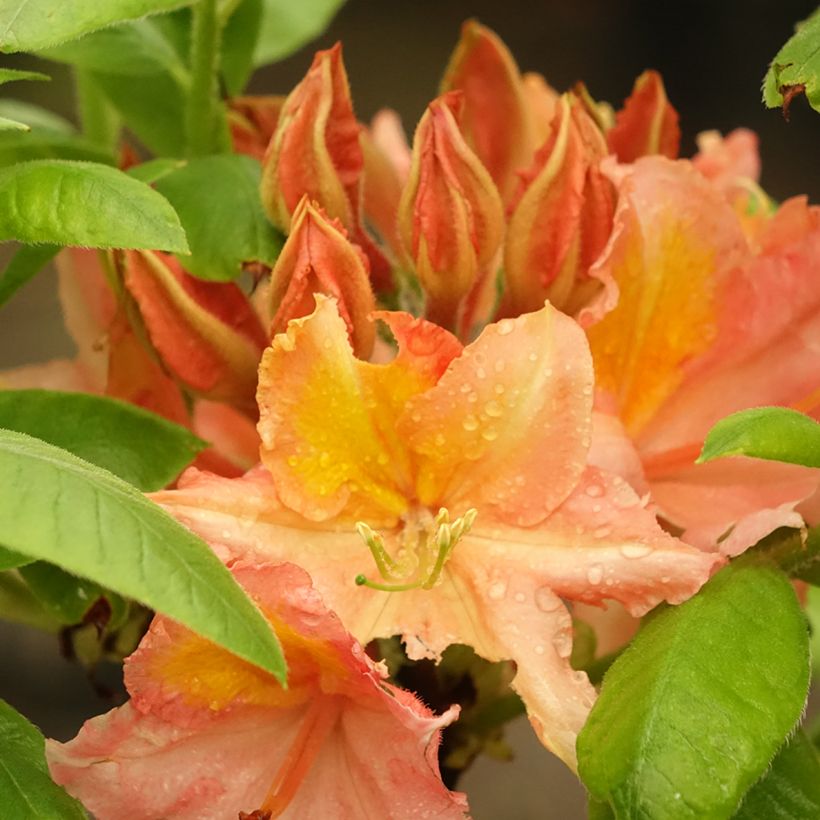

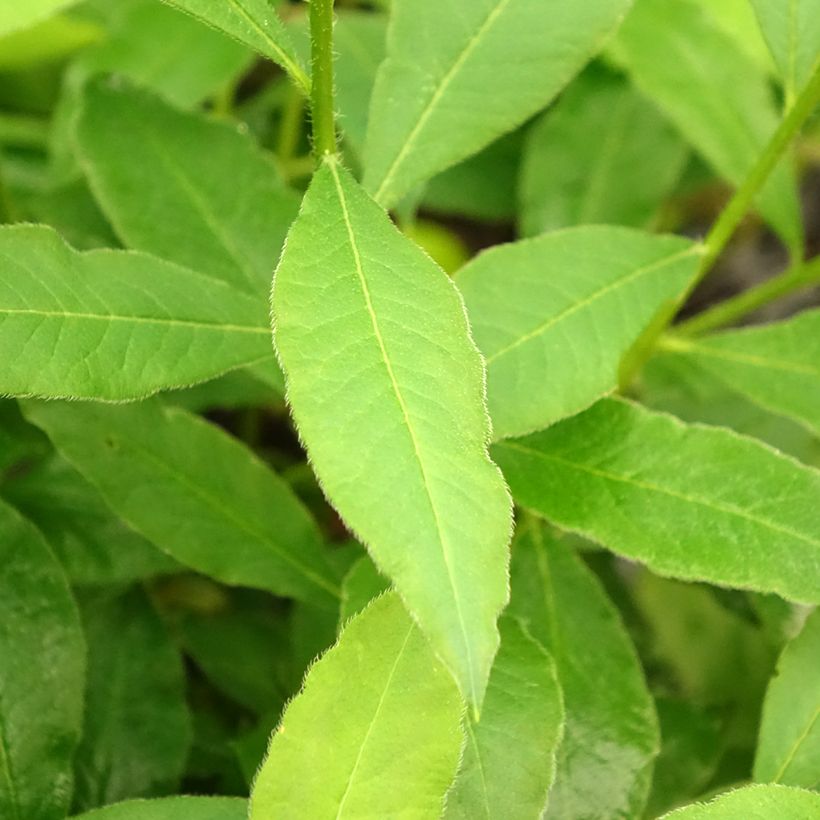

Plant habit
Flowering
Foliage
Botanical data
Rhododendron (Azalea)
x mollis
Demoiselles de Boutiguery ® Idylla
Ericaceae
Chinese Azalea, Soft Rhododendron
Cultivar or hybrid
Other Chinese Azalea
Planting and care
The Chinese Azalea Demoiselles de Boutiguery Idylla thrives a sunny location, unlike the Japanese Azalea, but its favourite position is in partial shade, or east-facing for the morning sun, especially in very sunny or hot regions. Plant it in an ericaceous or humus-rich, well-drained, lime-free soil that does not dry out in summer.
Make sure not to plant the root ball too deep, it should be level with the surface of the soil. Water copiously with alkaline-free water during dry periods, at least once a week in the first year. In spring, apply a fertilizer for ericaceous plants. Pruning is not essential but it is a good idea to prune lightly after flowering to keep the plant looking neat. Remove spent flowers to encourage new growth. The Azalea suffers from very few diseases when well-established outdoors. It can be attacked by weevils that eat the edges of the leaves and rootlets, and by the famous "Rhododendron lace bug", though not often causing significant damage. If the soil is chalky or poorly drained, or if the rootball is planted too deep, the leaves may turn yellow and eventually die.
Planting period
Intended location
Care
-
, onOrder confirmed
Reply from on Promesse de fleurs
Evergreen shrubs
Haven't found what you were looking for?
Hardiness is the lowest winter temperature a plant can endure without suffering serious damage or even dying. However, hardiness is affected by location (a sheltered area, such as a patio), protection (winter cover) and soil type (hardiness is improved by well-drained soil).

Photo Sharing Terms & Conditions
In order to encourage gardeners to interact and share their experiences, Promesse de fleurs offers various media enabling content to be uploaded onto its Site - in particular via the ‘Photo sharing’ module.
The User agrees to refrain from:
- Posting any content that is illegal, prejudicial, insulting, racist, inciteful to hatred, revisionist, contrary to public decency, that infringes on privacy or on the privacy rights of third parties, in particular the publicity rights of persons and goods, intellectual property rights, or the right to privacy.
- Submitting content on behalf of a third party;
- Impersonate the identity of a third party and/or publish any personal information about a third party;
In general, the User undertakes to refrain from any unethical behaviour.
All Content (in particular text, comments, files, images, photos, videos, creative works, etc.), which may be subject to property or intellectual property rights, image or other private rights, shall remain the property of the User, subject to the limited rights granted by the terms of the licence granted by Promesse de fleurs as stated below. Users are at liberty to publish or not to publish such Content on the Site, notably via the ‘Photo Sharing’ facility, and accept that this Content shall be made public and freely accessible, notably on the Internet.
Users further acknowledge, undertake to have ,and guarantee that they hold all necessary rights and permissions to publish such material on the Site, in particular with regard to the legislation in force pertaining to any privacy, property, intellectual property, image, or contractual rights, or rights of any other nature. By publishing such Content on the Site, Users acknowledge accepting full liability as publishers of the Content within the meaning of the law, and grant Promesse de fleurs, free of charge, an inclusive, worldwide licence for the said Content for the entire duration of its publication, including all reproduction, representation, up/downloading, displaying, performing, transmission, and storage rights.
Users also grant permission for their name to be linked to the Content and accept that this link may not always be made available.
By engaging in posting material, Users consent to their Content becoming automatically accessible on the Internet, in particular on other sites and/or blogs and/or web pages of the Promesse de fleurs site, including in particular social pages and the Promesse de fleurs catalogue.
Users may secure the removal of entrusted content free of charge by issuing a simple request via our contact form.
The flowering period indicated on our website applies to countries and regions located in USDA zone 8 (France, the United Kingdom, Ireland, the Netherlands, etc.)
It will vary according to where you live:
- In zones 9 to 10 (Italy, Spain, Greece, etc.), flowering will occur about 2 to 4 weeks earlier.
- In zones 6 to 7 (Germany, Poland, Slovenia, and lower mountainous regions), flowering will be delayed by 2 to 3 weeks.
- In zone 5 (Central Europe, Scandinavia), blooming will be delayed by 3 to 5 weeks.
In temperate climates, pruning of spring-flowering shrubs (forsythia, spireas, etc.) should be done just after flowering.
Pruning of summer-flowering shrubs (Indian Lilac, Perovskia, etc.) can be done in winter or spring.
In cold regions as well as with frost-sensitive plants, avoid pruning too early when severe frosts may still occur.
The planting period indicated on our website applies to countries and regions located in USDA zone 8 (France, United Kingdom, Ireland, Netherlands).
It will vary according to where you live:
- In Mediterranean zones (Marseille, Madrid, Milan, etc.), autumn and winter are the best planting periods.
- In continental zones (Strasbourg, Munich, Vienna, etc.), delay planting by 2 to 3 weeks in spring and bring it forward by 2 to 4 weeks in autumn.
- In mountainous regions (the Alps, Pyrenees, Carpathians, etc.), it is best to plant in late spring (May-June) or late summer (August-September).
The harvesting period indicated on our website applies to countries and regions in USDA zone 8 (France, England, Ireland, the Netherlands).
In colder areas (Scandinavia, Poland, Austria...) fruit and vegetable harvests are likely to be delayed by 3-4 weeks.
In warmer areas (Italy, Spain, Greece, etc.), harvesting will probably take place earlier, depending on weather conditions.
The sowing periods indicated on our website apply to countries and regions within USDA Zone 8 (France, UK, Ireland, Netherlands).
In colder areas (Scandinavia, Poland, Austria...), delay any outdoor sowing by 3-4 weeks, or sow under glass.
In warmer climes (Italy, Spain, Greece, etc.), bring outdoor sowing forward by a few weeks.

































